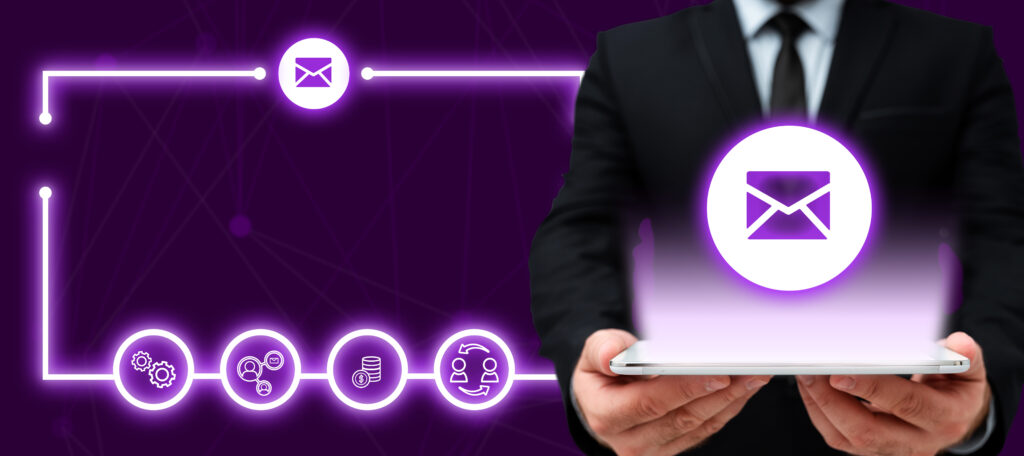We live in an era of information overload. Misinformation, fake news, and pseudoscience are everywhere, making it harder than ever to separate fact from fiction. As industries double down on content marketing, the battle for consumer attention has never been fiercer. So, how do you ensure your message cuts through the noise and reaches the right audience?
Email marketing provides a direct, credible, and effective way to engage your audience, nurture leads, and establish authority. By leveraging segmentation, personalization, and data-driven strategies, life science companies can transform email marketing into a powerful tool for education, engagement, and growth.
In this blog, we explore the best practices that make life science email marketing both effective and indispensable.
Segment Your Audience
Sending the same email to every subscriber is like giving the same medicine to every patient – it simply doesn’t work! On the other hand, audience segmentation divides your email list into targeted groups based on factors such as job role, industry, and research interests, ensuring that recipients receive relevant content.
Understanding your audience’s needs is key to effective segmentation. A researcher looking for the latest scientific breakthroughs has different priorities than a healthcare provider focused on clinical applications. By tailoring content to these specific interests, life science companies can provide value while increasing engagement.
The impact of segmentation is clear: segmented email campaigns have a 14% higher open rate and a 101% higher click-through rate than non-segmented ones, according to Mailchimp. A well-structured segmentation strategy ensures that emails reach the right recipients, leading to higher engagement and improved conversion rates.
Personalize Your Content
Personalization is the key to meaningful engagement, since it ensures that content aligns with a subscriber’s specific interests and needs. In life sciences, where professionals rely on precise and credible information, generic messaging is ineffective. Instead, companies must use data on user behavior, preferences, and past interactions to craft targeted emails.
According to Accenture, 91% of consumers are more likely to engage with brands that offer tailored recommendations. A data-driven approach to personalization not only increases engagement but also strengthens relationships and improves customer retention.
Optimize for Mobile Devices
With nearly 46% of all email opens occurring on mobile devices as per Litmus, optimizing email campaigns for mobile devices is crucial. Emails should be visually appealing and easy to navigate on smaller screens. A positive mobile experience leads to higher click-through rates and conversions.
A/B Testing for Continuous Improvement
A/B testing involves sending different versions of an email to determine which performs better. Life science companies can experiment with subject lines, email content, and call-to-action (CTA) buttons to identify what resonates best with their audience.
By analyzing the results, businesses can refine their strategies to improve engagement and maximize ROI. Regular testing ensures that email campaigns evolve with audience preferences and industry trends.
Provide Valuable Content
Life science professionals seek insightful and relevant content. Email campaigns should offer valuable resources such as research findings, industry updates, and educational content.
According to the Content Marketing Institute, 93% of B2B organizations say content marketing generates more leads than traditional marketing strategies. Quality content establishes a company as a thought leader, fostering trust and loyalty among recipients.
Follow Compliance and Data Privacy Regulations
Data protection and privacy are critical in life science email marketing. Compliance with regulations such as GDPR (General Data Protection Regulation) and CCPA (California Consumer Privacy Act) is essential to build trust and maintain ethical marketing practices.
Companies should seek explicit consent for data usage and provide clear opt-out options in every email. Transparency in data handling strengthens credibility and enhances customer relationships.
Nurture Leads with Drip Campaigns
Drip campaigns are a series of automated emails sent at strategic intervals to guide potential customers through the sales funnel. Instead of overwhelming prospects with information all at once, drip campaigns provide timely, relevant content based on their stage in the buying journey. For life science companies, this could include educational resources, research insights, case studies, and testimonials that build trust over time.
For example, Thermo Fisher Scientific uses drip campaigns to nurture leads for its lab equipment. A researcher who downloads a whitepaper on next-generation sequencing may receive follow-up emails with related application notes, product comparisons, and invitations to webinars, gradually moving them toward a purchase decision.
Companies that excel at lead nurturing generate 50% more sales-ready leads at a 33% lower cost. Drip campaigns keep prospects engaged, establish credibility, and help convert leads into customers.
Incorporate Interactive Elements
Adding interactive elements like quizzes, surveys, and GIFs can enhance user engagement. Interactive content encourages recipients to interact with emails rather than passively scrolling through them.
According to Cheetah Digital, interactive emails increase click rates by an average of 18%. Engaging content makes emails more compelling and improves overall campaign effectiveness.
Monitor and Analyze Performance
Tracking key email metrics such as open rates, click-through rates, conversion rates, and unsubscribe rates, is essential for optimizing marketing strategies.
Regular analysis helps identify what works and what needs improvement. By leveraging data-driven insights, life science companies can fine-tune their approach and ensure their campaigns deliver maximum impact.
Conclusion
In a digital landscape overflowing with information, the challenge is to make a lasting impact. Life science email marketing, when backed by segmentation, personalization, and valuable content, ensures your message cuts through the noise and delivers real value.
However, to see real engagement, companies must continually refine their approach, embrace data-driven insights, and stay compliant with evolving regulations. That’s where expert guidance makes a difference.
At Diverge Communications, we specialize in crafting high-impact email marketing strategies tailored for life science companies. Whether you’re looking to optimize your outreach, nurture leads more effectively, or build authority in your industry, our team can help. Get in touch with us today to elevate your email marketing game.







